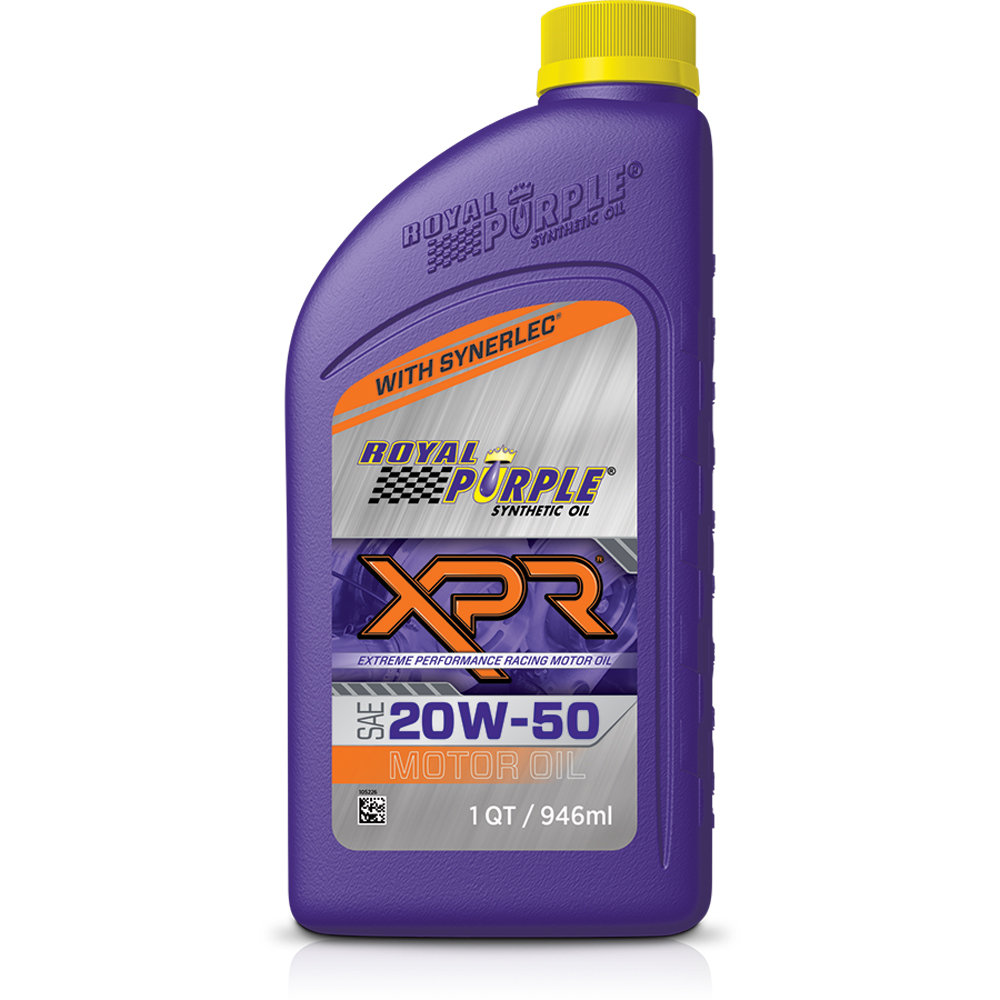Race Fluids and Lubricants: Science Friction
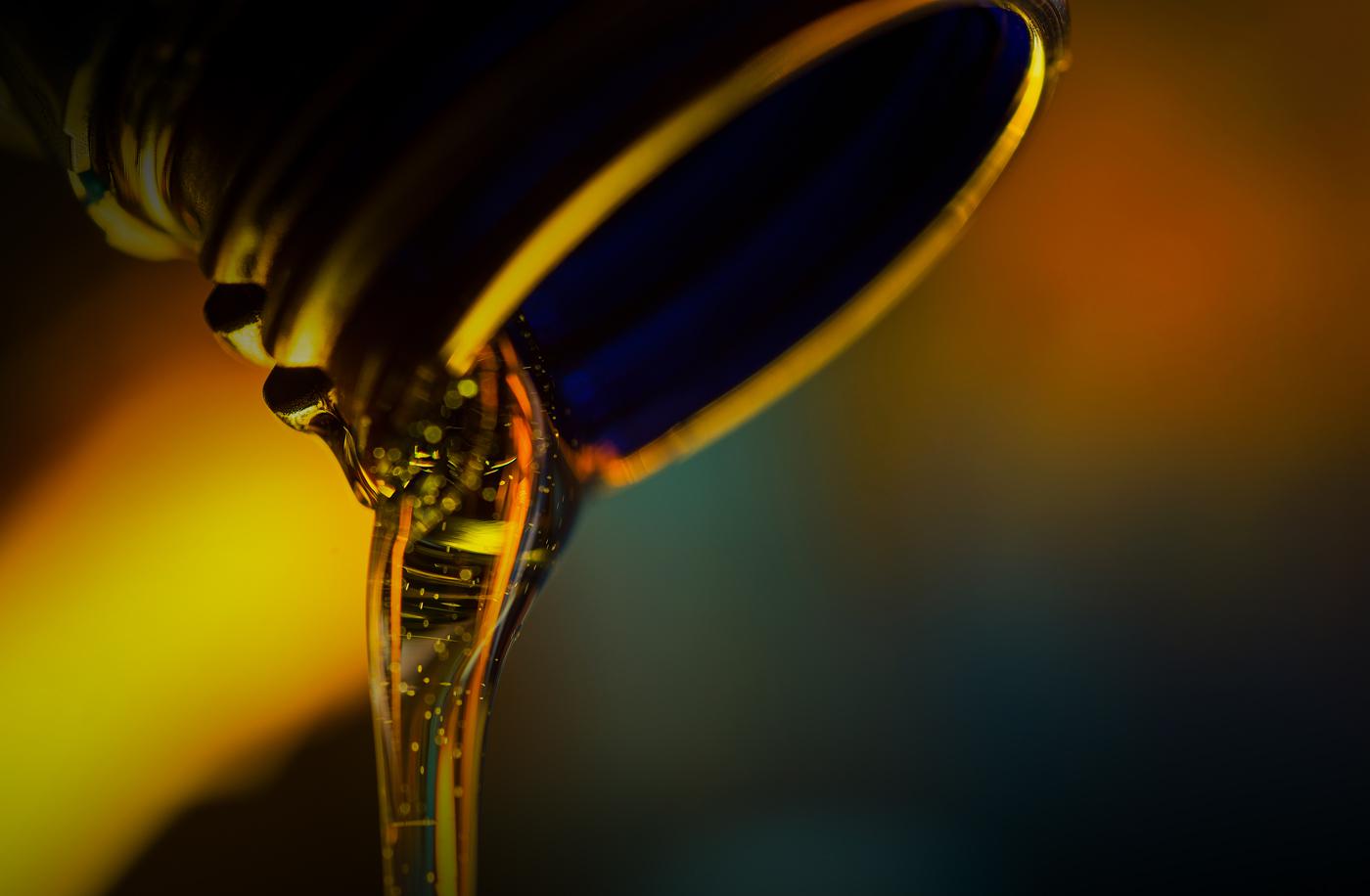
Lubrication companies are expanding the envelope to develop specialized products for targeted applications, all while helping release untapped horsepower.
Rules can hamstring engine builders who want to make more power. Sanctioning bodies limit airflow, cam specs, compression ratio, and more in an effort to manage costs for the car owner while keeping an eye on potentially unsafe speeds.
When engine builders can’t use modern techniques to actually increase horsepower, they’re often limited to finding lost or missing horsepower. One of the best ways to free up those ponies is friction reduction in the engine and drivetrain.
On the other hand, in classes where rules are much more flexible, racers have been cranking up the boost and creating high-stress conditions that can damage expensive components.
That’s where companies that specialize in lubricants have been developing and testing very specialized formulas to meet specific needs of the racer, whether in a rules-restricted or open class.
“In the past few years, I’ve seen more attention to application-specific products,” said Kyle Fischer of Lubrication Specialties, Mt. Gilead, Ohio. “Some of the modifications that guys are putting to these cars are really pushing the limit. When you find new problems, you find new solutions.”
There are also relatively untouched territories, such as within diesel and powersports, where lubrication issues can be different than in traditional motorsports.
“We do a lot of R&D with our diesel race teams because they take these components further than they’ve ever been,” added Fischer. “But as a manufacturer, I wish we talked more within the industry.”
Fischer told the story of meeting a shock absorber specialist in one of his racer’s pits. He learned of a consistent failure issue but also discovered that there was no hardcore science behind the selection of the oil in the shock absorber. Fischer visited the shock company’s trailer to see the problem up close, and after conferring with his engineer back home, they agreed on a potential solution.
“We’ve known how to fix this problem for years, but we’ve never talked to a shock absorber company to know that a problem existed,” said Fischer. “The shock company has great test equipment, and we’ll do a lot of testing with them and hopefully formulate a great solution.”
In another example, Fischer was talking with a racer who ran a blown alcohol engine and bemoaned that he was changing the self-contained oil in the supercharger after every run. After further discussion, Fischer learned that the constant oil changes weren’t because the oil was breaking down, but because the racer feared worn metals were being deposited in the oil.
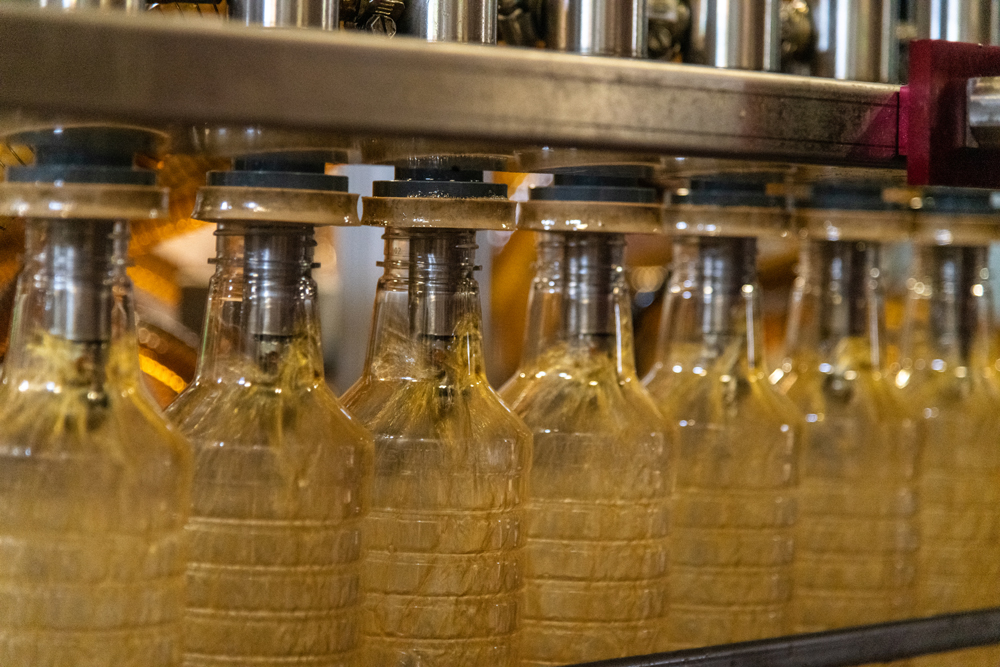
“So, let’s try to fix the problem and use an oil to reduce the wear and extend the life of the oil in the supercharger,” said Fischer. “You know, we stay in our lane. We’re a lubricant company. We’re in the lab and at the track, and we want to know what kind of problems racers are having that a lubricant can fix.”
With all the choices in the market, racers need to be aware of the technologies behind a product and its intended use. They should know what the manufacturers have learned: the application will dictate the chemistry. The very best gear oil, for instance, makes a lousy engine oil.
That attitude is well represented throughout the lubrication industry. What follows is a sampling of companies that have developed unique products to address specific problems.
Tri-Ex2 Grease & Gear Oil
TriboDyn Lubricants
One NASCAR team was experiencing drive-plate failures, especially on high-banked tracks where the load is brutal on the right side. The team was replacing the plates as often as every other race.
“With our ceramic technology, we made them a grease that would solve the problem,” said Mark Wheatley of TriboDyn Lubricants, Mooresville, North Carolina. “We haven’t had a failure since, and at least 16 Cup teams are using it.”
The Tri-Ex2 extreme temperature and pressure grease is also good for wheel bearings and other components under high-stress conditions. It leverages the same ceramic coating technology used in TriboDyn’s engine and gear oils.
“We heard from racers running quick-change rearends, and they complained that they couldn’t change gears without wearing gloves,” continued Wheatley. “Our Tri-Ex2 full synthetic gear oil works so well, it can lower the operating temperature up to 80 degrees.”
The gear oil is offered in 75W-90 and 75W-140 viscosities and is suited for differentials, manual transmissions, transfer cases, and other gear boxes that require a lubricant. The patented ceramic lubricant features a complex mixture of gear lubricants, combined with synthetic base stocks, and a sulfur-phosphorus extreme pressure additive package with friction modifier. Wheatley explained this formula provides thermal and oxidative stability, as well as anti-foam, anti-rust, and anti-corrosion protection.
DBR & HVL
Driven Racing Oil
While Driven Racing Oil’s High-Viscosity Lubricant (HVL) has been around for about 12 years and is popular as an engine-assembly lubricant, the company recently gave the product a freshening.
“HVL is a legacy product that we recently updated with the Pennsylvania base oil that’s in our GP-1 high-performance oils,” said David Chamberlain of the Memphis, Tennessee-based company. “It makes for a phenomenal assembly lube because it has a natural cling and tack. It’s going to stay where you put it.”
The upgraded assembly lube is a non-foaming product and blends well with the break-in oil, extending the oil film thickness during that critical period. HVL is also a perfect segue into Driven’s latest product, a 15W-40 break-in oil for diesel engines.
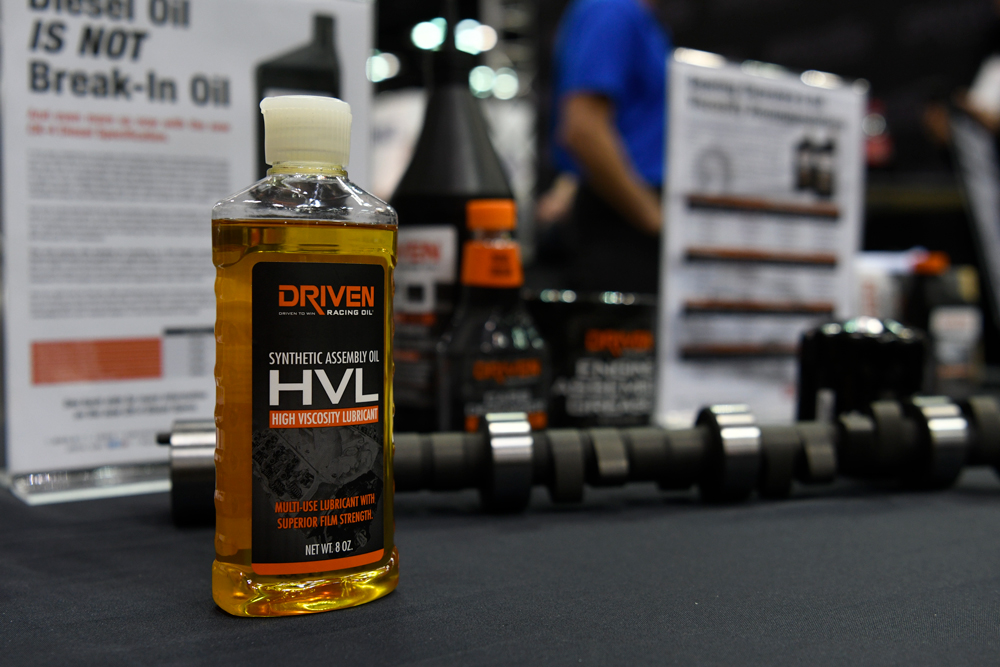
“Driven pioneered specific break-in oils for gas engines,” said Chamberlain. “This DBR formula piggybacks much of the same chemistry, but it has a much more robust dispersant package.”
Diesel engines are notorious for producing soot, which are micro-sized pieces of hard carbon. Soot-related wear can be found throughout a diesel, especially in places like the timing chain or other areas with tight metal-to-metal tolerances.
“With a diesel, the soot has to be managed,” explained Chamberlain. “We want to keep the soot suspended in the break-in oil. It shouldn’t fall out into the component.”
According to Driven Racing Oil, diesel engines can run the break-in oil longer than what is recommended for a gas engine. That’s because of the lower rpm levels, and diesel engines have larger sumps for greater oil capacity.
“However, we suggest changing the filter after about 60 miles to pull any metallic particles out of circulation. Then you can go about 800 miles before draining the break-in oil, changing the filter, and switching to a conventional oil,” concluded Chamberlain.
Supreme 7000 Synthetic Plus 20W-50
Schaeffer Manufacturing
The Supreme 7000 Synthetic Plus 20W-50 race oil is a high-zinc formula designed as a general-purpose racing lubricant and can be used in select four-stroke motorcycle and ATV engines. The foundation is a high-quality, para-synthetic base stock that is mixed with an additive package and shear stability viscosity index improver.
“Supreme 7000 Racing Oil 20W-50 is fortified with Micron Moly and Penetro, our proprietary friction modifiers we use in all our engine oils,” said Dawn Cross of Schaeffer Manufacturing, St. Louis, Missouri. “Those friction modifiers are key to protecting race engines operating in extreme driving conditions. In addition to the friction modifiers, Supreme 7000 Racing Oil 20W-50 is blended with extra zinc to further protect flat-tappet cam engines and other components.
“Each season we hear from racers who tell us how impressed they are with the condition of their engine at the end of the season,” said Cross. “The results are the same: Engines are clean with little to no wear. Some racers report their oil temperatures are consistently 10 to 15 degrees cooler than with other lubricants.”
OxyCrate Racing Fuel
Klotz Synthetic Lubricants
A number of Late Model racers on both dirt and asphalt were encountering exhaust valve recession on their aluminum heads. To combat this problem, Klotz Synthetic Lubricants in Fort Wayne, Indiana, partnered with Hendren Racing Engines in Rutherfordton, North Carolina, to develop OxyCrate racing fuel, which is optimized for the 525, 602, 603, and 604 crate engines from GM Performance.
“Severe valve recession can impact valve lash and restrict exhaust flow,” said Jeff Streby of Klotz Synthetic Lubricants. “This reduces engine performance and increases maintenance costs over time.”
Streby said Klotz’s fuels offer measurable increases in horsepower and torque but were never designed for the unique durability requirements of modern crate engines. The company leveraged knowledge working with the Indy Racing League in the 1990s to develop a new race fuel.
Using a chassis dyno to validate the formulas, the new fuel showed an increase of 8 horsepower at 6,000 rpm over comparable fuels.
“We achieved horsepower and torque objectives early in the fuel’s development,” noted Streby. “However, several iterations were needed to achieve the desired hardware protection.”
Klotz engineers discovered a blend of its current products delivered the performance goals. Those products included its base high-octane fuel, a proprietary oxygenating additive, and Uplon, a Klotz product sold separately as a fuel lubricant that adds surface-active, anti-wear chemistry to the formula.
Supercool
Red Line Synthetic Oil
With power adders becoming more popular on both factory production cars and race cars, managing heat is always a concern. The Supercool performance coolant from Red Line Synthetic Oil was developed to serve a wide band of performance applications.
“As OEM manufacturers were offering more factory models with power adders, our customers were looking for ways to keep their engines cool and protect their investment,” said Mark Beatty of the Benicia, California-based company. “We launched Supercool to fit all makes and all models versus OEM fluids that only fit a narrow range of vehicles.”
Supercool is designed with better heat-transfer properties compared to glycol-based antifreeze. It comes as a 50/50 ready-to-use premix and is compatible with gas or diesel engines found in tow vehicles.
“When used with supercharger heat exchangers, it helps keep the system cooler and takes longer to heat soak a water-to-air intercooler,” added Beatty. “Our formula enhances the fluid’s ability to transfer heat, reducing operating temperatures by up to 20 degrees F.”
Beatty also said Supercool will clean and lubricate water pump seals and can be used in systems with aluminum, cast iron, copper, brass, and bronze components. A formula is also available for the powersports industry.
“We are in the business of helping people protect their passion, no matter if they show it, cruise it, race it, or push it to the limit,” added Beatty.
Pro ATF 10, 20 & 30
HPL Oil
Fine tuning an automatic transmission and torque converter is a little easier with HPL Pro ATF transmission fluid that’s available in SAE 10, 20, and 30 weights.
“We designed them so you can mix them,” explained Erik Brock of HPL, Hebron, Indiana. “You can add a little 30 if you want to tighten up the converter, or you can mix them to achieve the reaction that you want for track conditions.”
Engineered for racers who were experiencing problems due to high-heat or high-stress conditions from boosted engines, the formulas are designed to reduce clutch slippage and provide more consistent fluid behavior with temperature swings.
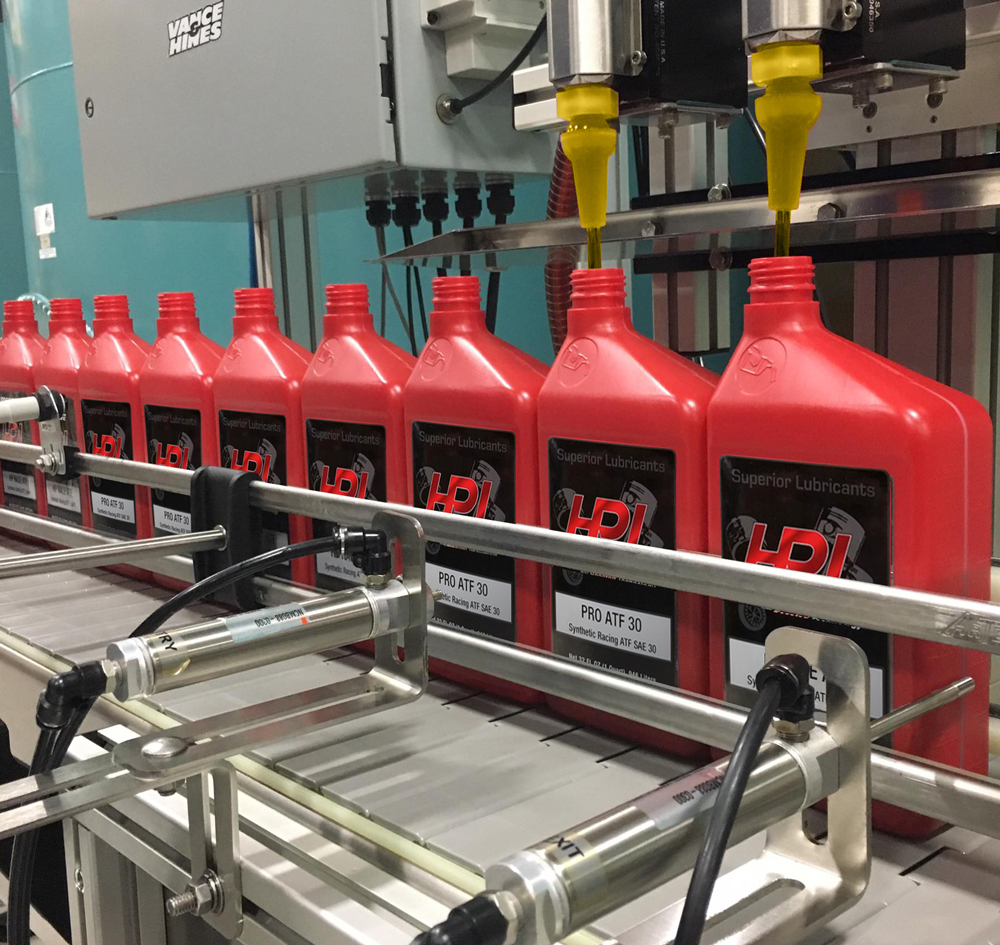
“We built our Pro ATF from scratch for extremely high temperatures,” explained Brock. “Racers with turbo cars trying to spool up on the brake can build 100 degrees a second, and that can kill the trans oil. We designed the Pro ATF so it wouldn’t be such an issue.”
Formulating a new ATF often leads to compromises or tradeoffs in different areas of performance. “We knew the limitations of current chemistry and experimented with chemistries and technologies,” said Brock. “When building an oil, any oil, a change to the chemistry a tenth of a percent can affect another part of the oil. For example, a change in chemistry to improve anti-wear properties can completely wreck anti-foam or corrosion resistance. Our main goal was to build an oil that wouldn’t fall apart in a race vehicle with high temperatures.”
LX4 Lubricity Extreme
Hot Shot’s Secret
When engineers notice problems in company-sponsored race vehicles, work on solutions tends to begin right away.
“We developed it after we found problems on our diesel race trucks,” said Fischer of Lubrication Specialties, the manufacturer of Hot Shot’s Secret’s LX4 Lubricity Extreme.
The problem was sourced to the Bosch CP4 fuel pump, which replaced the CP3 in many diesel applications, including GM, Ford, Ram, and Jeep.
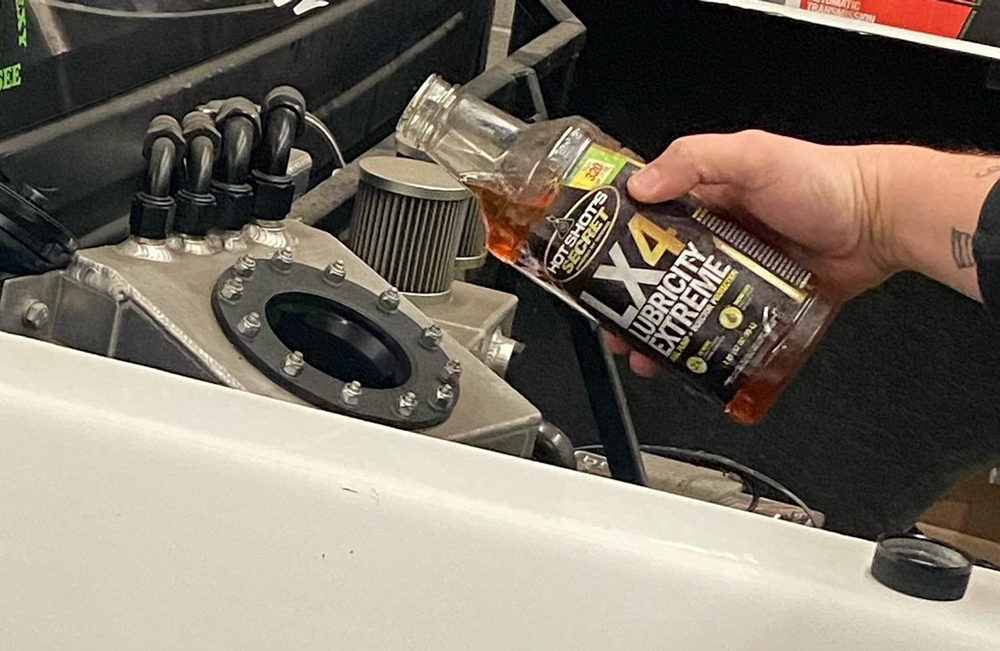
“But the CP4 was developed based on Euro-spec diesel fuel, which has higher standards than our ULSD [ultra-low sulfur diesel] domestic fuel,” said Fischer. “We have a much looser standard, which allows for a drier fuel. Where this really showed its face was at the track in the diesel series. Racers were asking why they were burning up fuel pumps so fast.”
Hot Shot’s Secret reached out to industry insiders and conducted tests with a lubricity agent on both the CP3 and CP4. Basically, the process of removing sulfur also removes nitrogen and oxygen, both of which helped improve the lubricity in diesel fuel. Part of Hot Shot’s Secret’s secret was to return oxygen to the fuel, which has no effect on the environment.
“We really needed to get the lubricity levels in the fuel up. The fuel is the only thing lubricating the pump,” noted Fischer. “The trick is to bring up the lubricity without affecting the cetane. Racers still need to make power with the fuel but also protect the components in the fuel system at the same time.”
Pro Max ATF
LAT Racing Oils
There’s no doubt automatic transmissions are bearing the full brunt of tremendous horsepower gains of the past few years, and that has sent lubrication engineers to the lab to find better ways to protect those parts.
“An ATF can fail because of high horsepower and high heat,” explained Danny Vaca of LAT Racing Oils, Orange, California. “With our Pro Max ATF synthetic, we built it from the ground up to be robust to fight heat issues and help the transmission live through the tortures of the turbo and supercharger cars.”
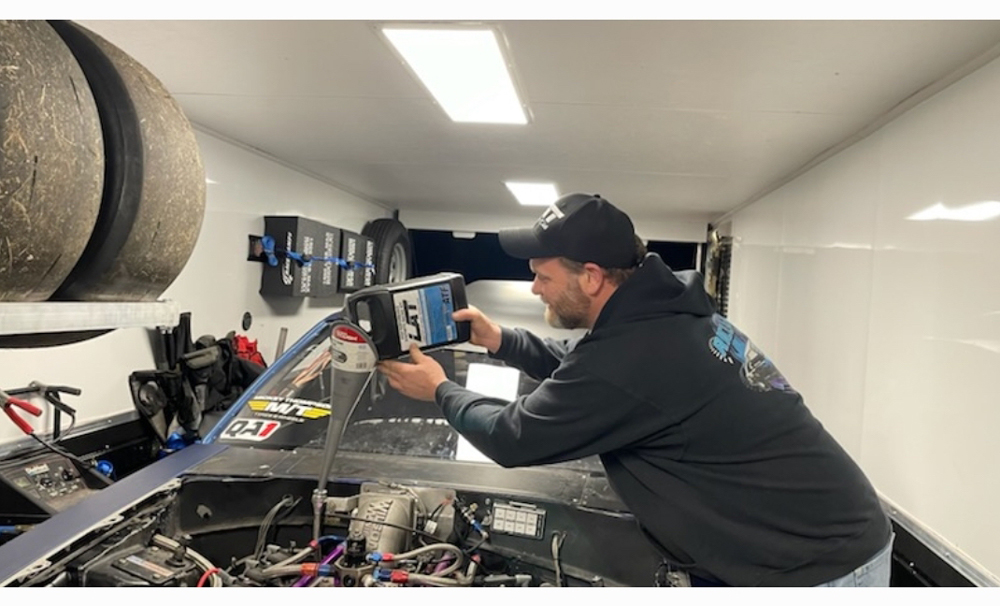
LAT offers three blends of ATF. The Pro ATF is the base formula with a viscosity index of 210, while the Pro Lite recipe has a viscosity index of 165 and is designed for reduced drag and loose torque converters. The Pro Max ATF is built for high-stress conditions that require higher shear resistance, faster lockups, and smoother shifts.
“When I tell them how much it costs, they say that’s triple what they normally pay for ATF,” said Vaca. “Then I ask how often they change transmission fluid. Sometimes the answer is after every race because the fluid has gone bad. Basically, I got them to answer their own question because our formulas will live much longer.”
Speed Sauce and Speed Sauce Plus
VP Racing Fuels
World War II piston aircraft used to inject a mixture of water and alcohol into the intake manifold to help control knock, and that same trick is still being used today with high-boost turbocharged engines.
“This ‘charge cooling’ fluid not only cools the hot compressed air coming into the engine but also acts as octane on demand due to the high-octane rating of alcohol,” explained Mark Walls of VP Racing Fuels, San Antonio, Texas, which markets two versions of a water-injection formula. “Over time, the racing world adopted this technology, followed by a few production cars, such as the BMW M4 GTS.”
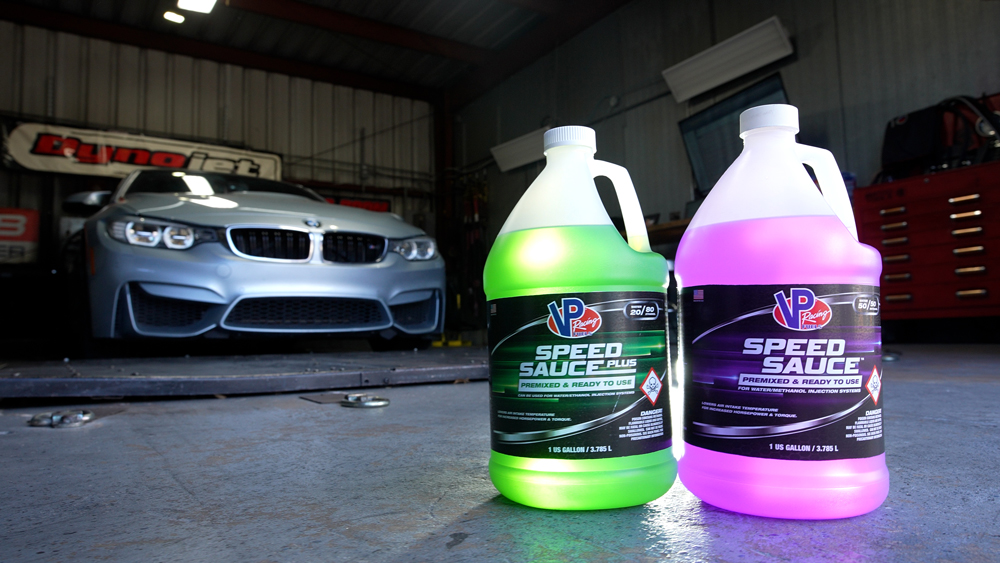
Today’s typical mixture is a 50:50 blend of water and either ethanol or methanol. The formula in VP’s Speed Sauce is one part water, one part methanol.
“Methanol is used due to its high octane and latent heat of vaporization,” explained Walls. “VP Racing started looking at other alcohols that potentially could maintain or improve upon the benefits of the water/methanol blends without some of the downfalls, such as toxicity, corrosiveness, and lower energy content.”
VP then settled on an 80:20 ethanol/water blend for its Speed Sauce Plus, using ethanol for its increased energy content, higher octane, safer handling from a toxicity standpoint, lower corrosion, and offering up to 100% renewable content.
“While choosing blends of alcohol and water, a balance of charge cooling and octane tradeoff will be realized,” added Walls. “Testing at VP resulted in a mixture that gives ‘enough’ charge cooling and the right amount of octane on demand to deliver up to 5% more power than the water/methanol blend while using up to 30% less product. While looking at stock performance vs. alcohol injection performance, we were able to increase horsepower from 425 to 522 (turbo limited) and torque from 406 to 621 lb.-ft.”
Blud Lubricants
100% Synthetic Racing Engine Oil
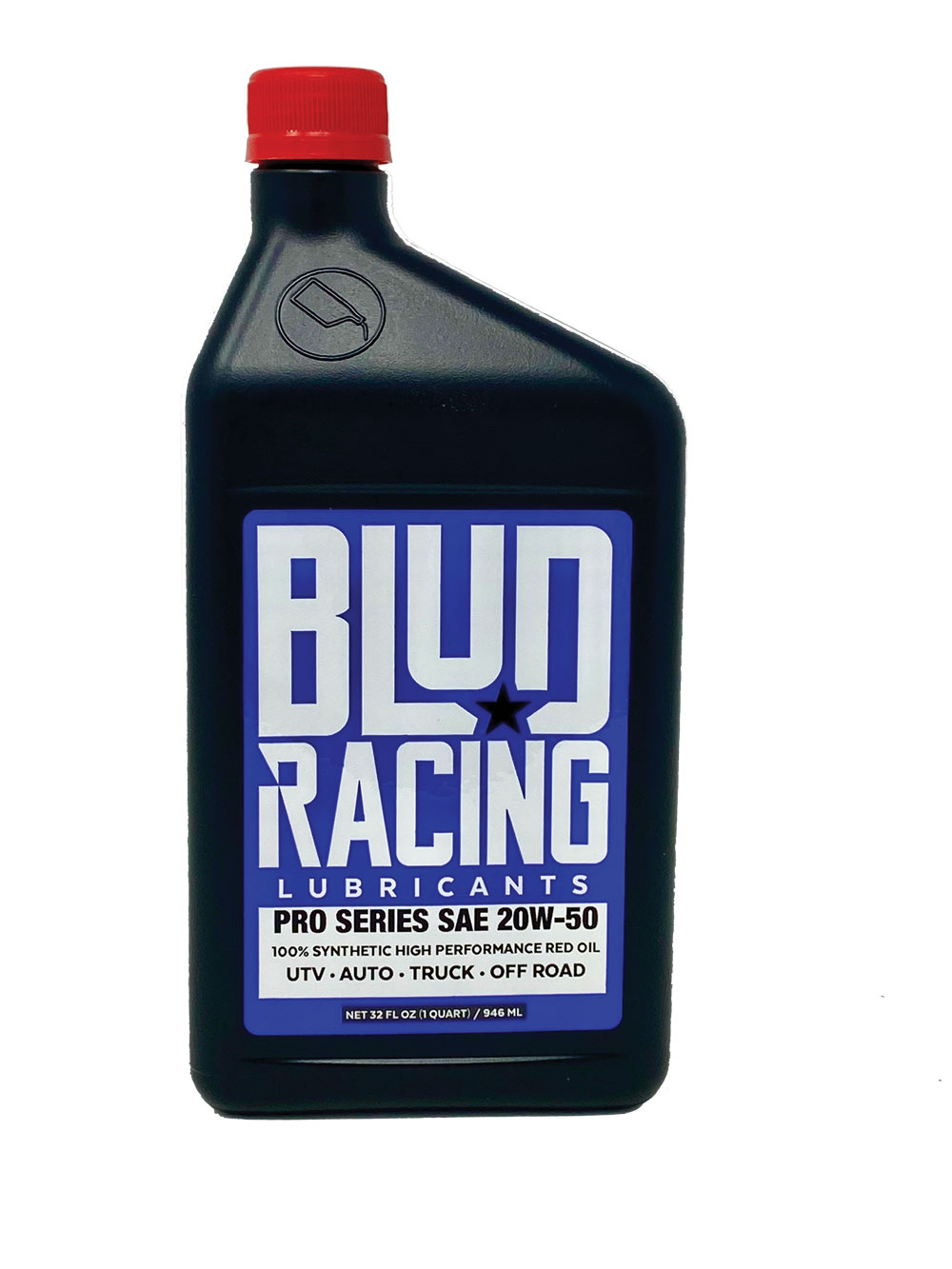
• Superior anti-wear formula reduces damaging wear and increases engine life.
• Protection at startup and low oil temperatures.
• Film strength that maintains stability at high temperatures and with fuel dilution.
• Low friction co-efficient reduce parasitic loss and increase performance.
• Increase alkalinity prevents rust and corrosion.
• Promotes cleanliness and sludge prevention/removal.
• Exception anti-foam capability.
• Made in the USA.
For more info: bludlubricants.com
Champion Brands
Full Synthetic Racing Power Steering Fluid
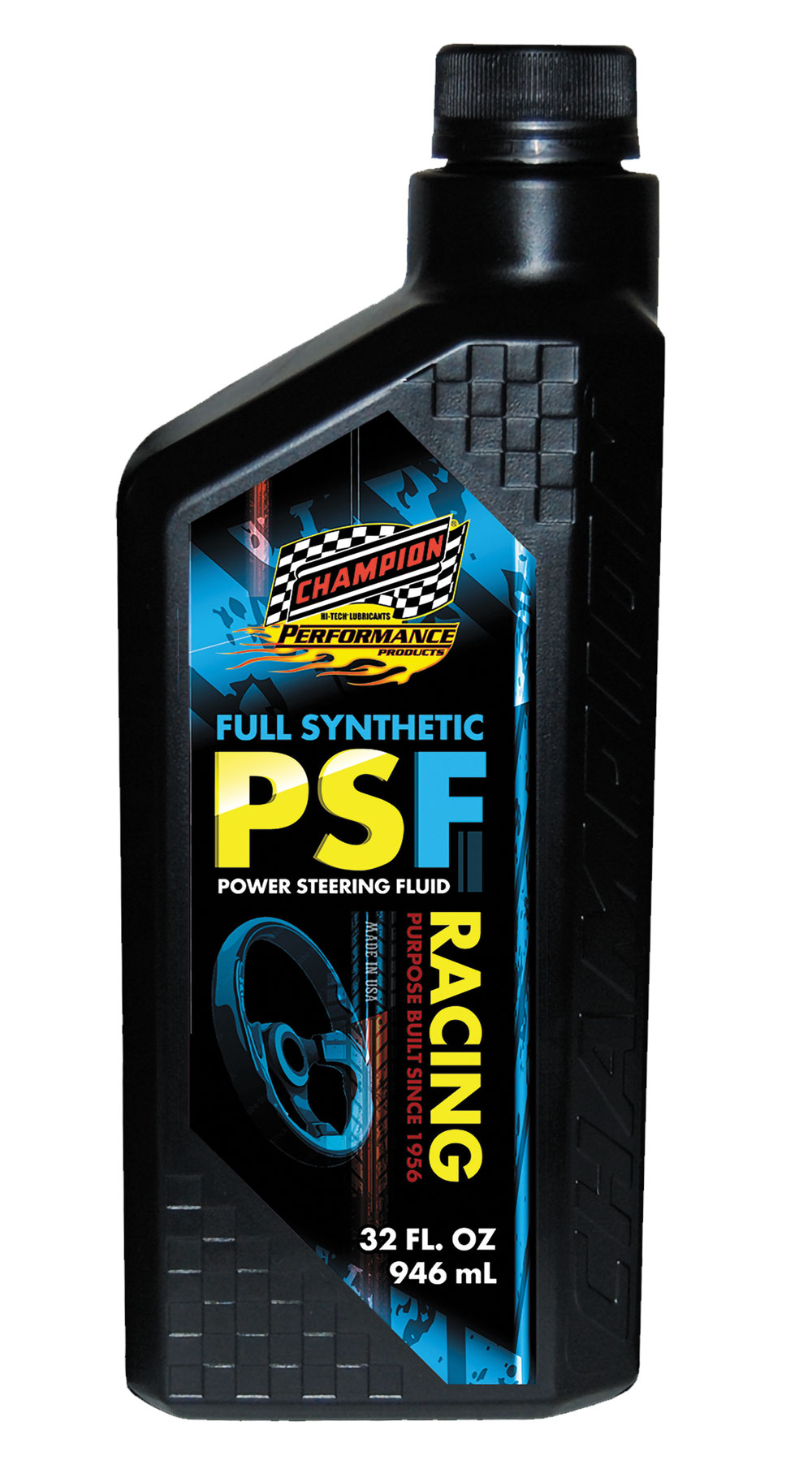
• Formulated to meet the specific performance demands of today’s high-performance racing power steering systems.
• Purpose built with higher viscosity than conventional power steering fluids, helping provide superior protection and performance.
• Exceptional anti-wear properties that help protect the system, anti-foam agents help prevent pump cavitation, and anti-oxidant properties help
stop the formation of sludge.
• Stable viscosity under high-speed/high-temperature operation.
• Reduces temperature and delivers consistent steering response.
For more info: championbrands.com
Driven Racing Oil
GP-1 85W-140
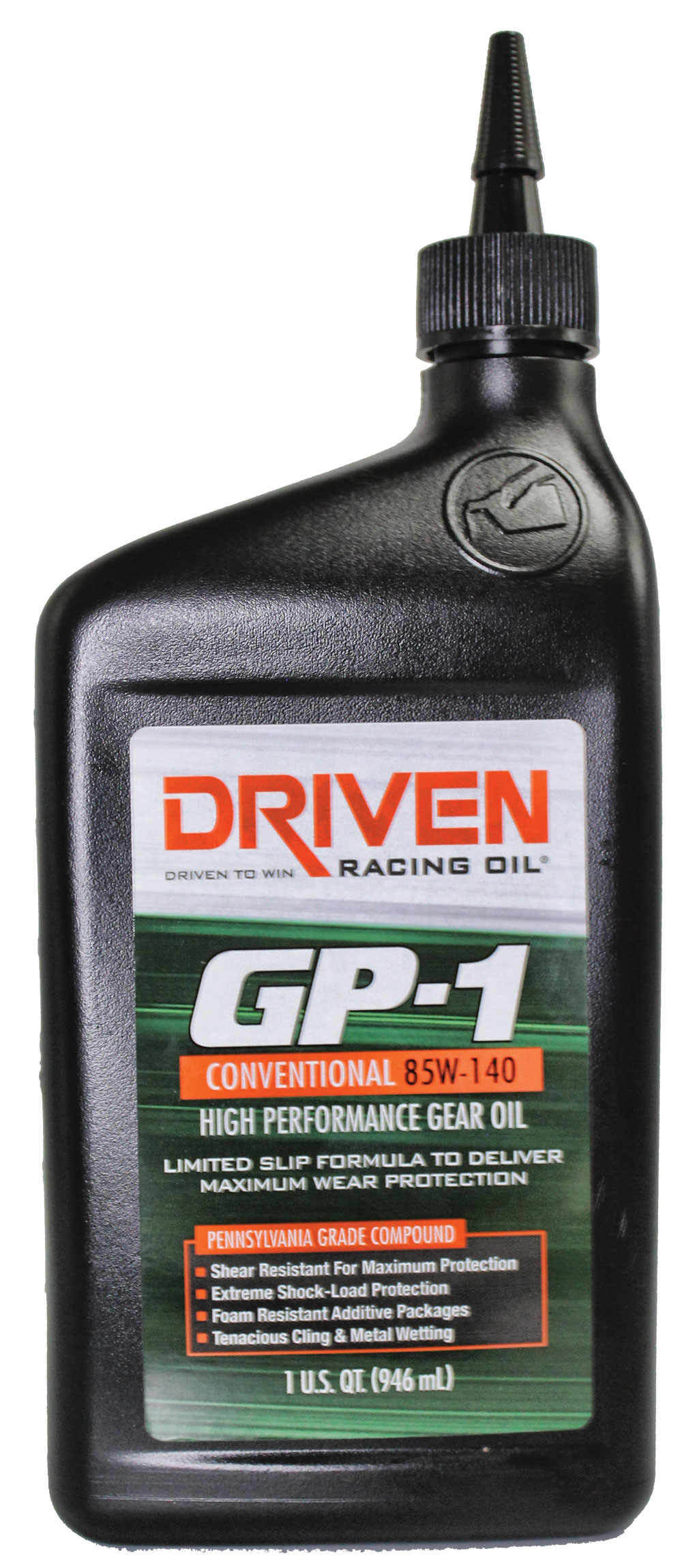
• Premium Pennsylvania base oil provides natural film strength and
tenacious cling that resists centrifugal fling.
• Shear resistant formulation protects high offset ring-and-pinion gears
from high shock loads encountered in motorsports and off-road applications.
• Conventional formulation as recommended by leading gear manufacturers.
For more info: drivenracingoil.com
Hot Shot’s Secret
Adrenaline Racing Oil
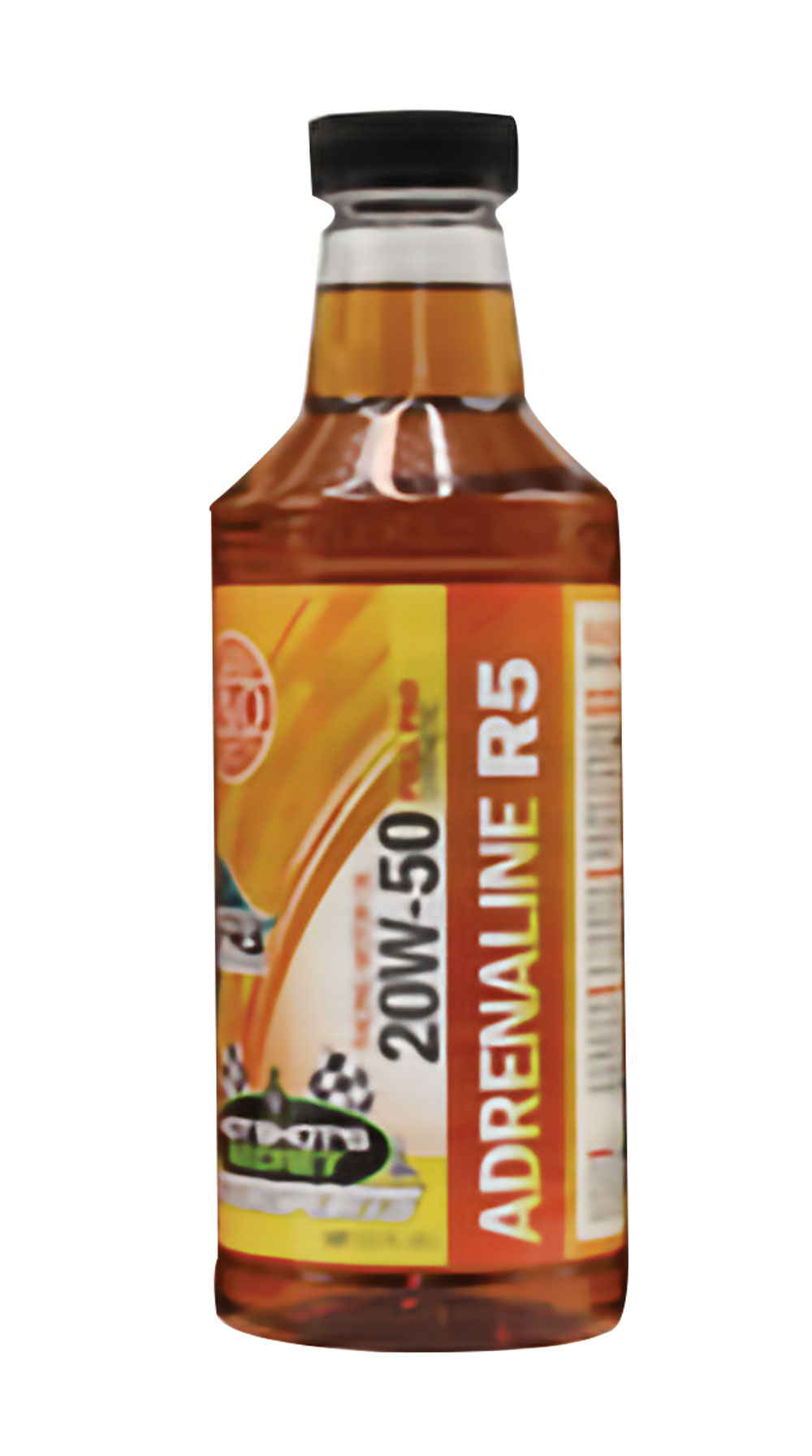
• Formulated with premium grade Group IV PAO Synthetic base oil.
• Infused with FR3 Nano Technology and high-zinc additive package for exceptional anti-wear properties.
• Improves horsepower up to 3%.
• Increased oxidation and thermal stability, deposit and sludge prevention, and reduced oil breakdown.
• Formulated for high-horsepower, high-performance racing applications.
• Available in 5W-20, 10W-30, 15W-40, 20W-50, ALKY-60W.
For more info: hotshotsecret.com
Klotz Synthetic Lubricants
Pure Estorlin Racing Technology
Synthetic Engine Lubricant
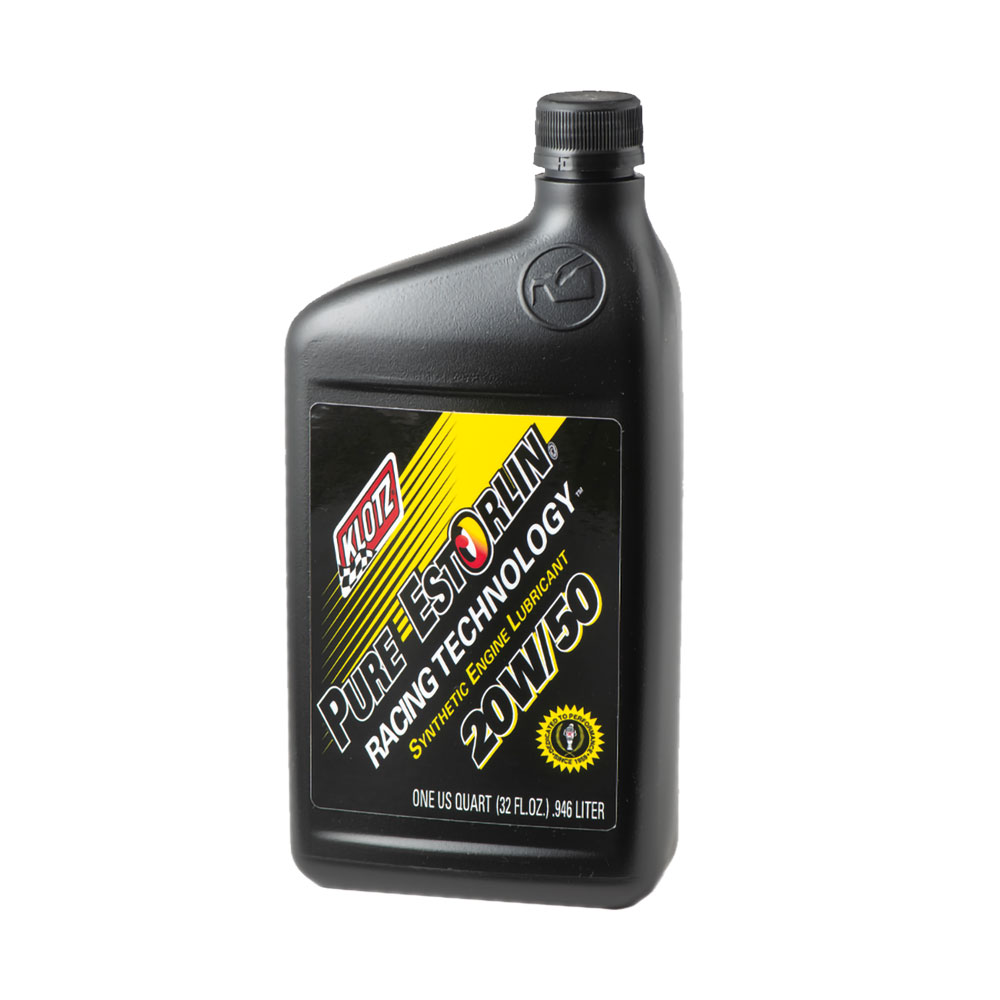
• The core additive package is optimized to mitigate oxidation, even under extended periods of high oil temperatures.
• Contains elevated levels of zinc to protect hardware such as camshaft roller bearings and flat tappets from wear.
• Boosted with a range of friction modifying chemistry to increase horsepower, lower operating temperatures, and further reduce wear.
• Pure Estorlin Racing oil has a robust detergent package to maintain engine cleanliness and prevent high-temperature deposits such as varnish.
For more info: klotzlube.com
LAT Racing Oils
LAT PRO MAX ATF Synthetic
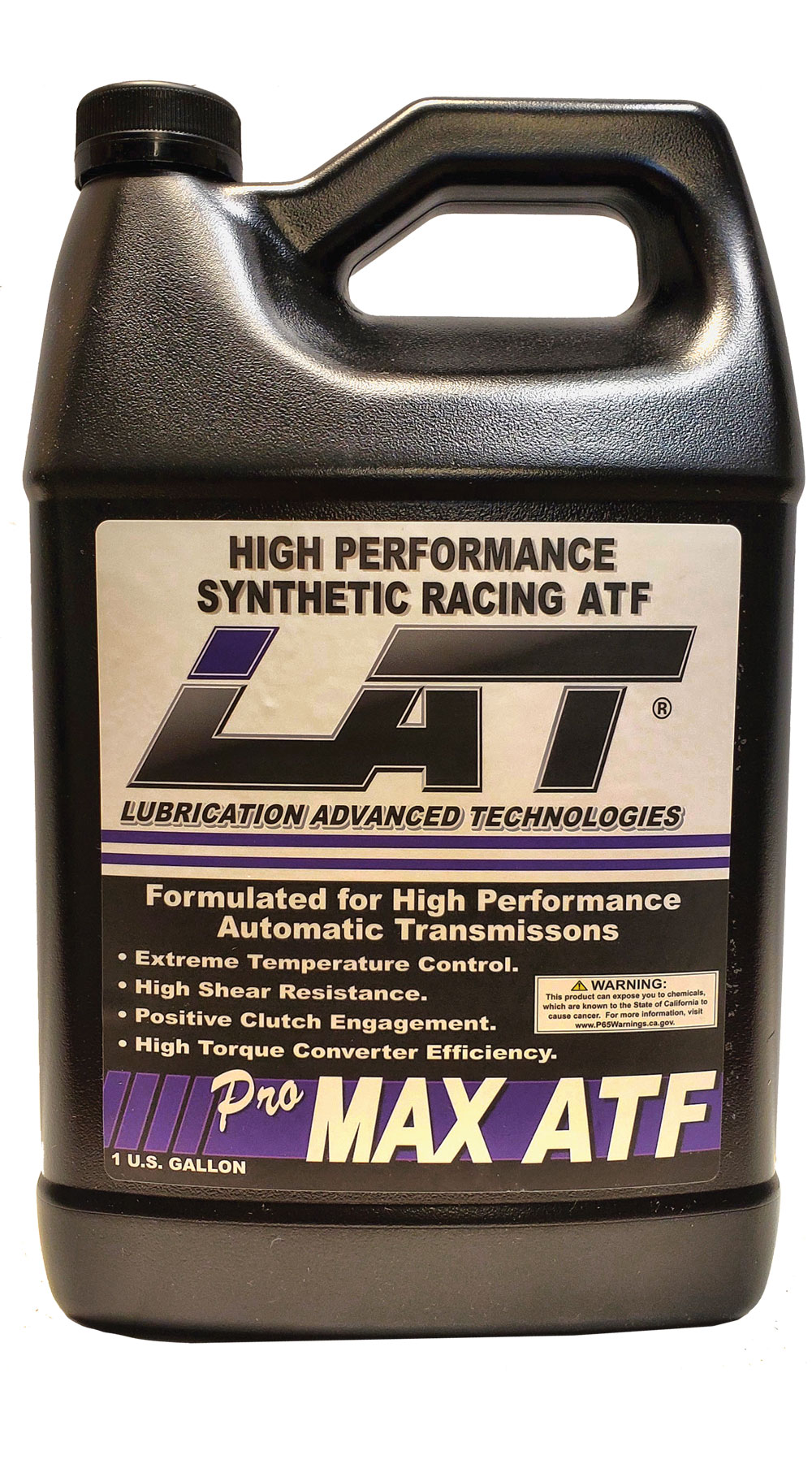
• Specifically blended for use in automatic racing transmissions.
• Benefits include cooler operating temperatures, faster lock-ups, smoother shifts, and improved elapsed times.
• LFR technology reduces wear and offers longer life on all internal parts.
For more info: latracingoils.com
Lear Chemical Research Corp.
ACF-50 Anti-Corrosion Formula
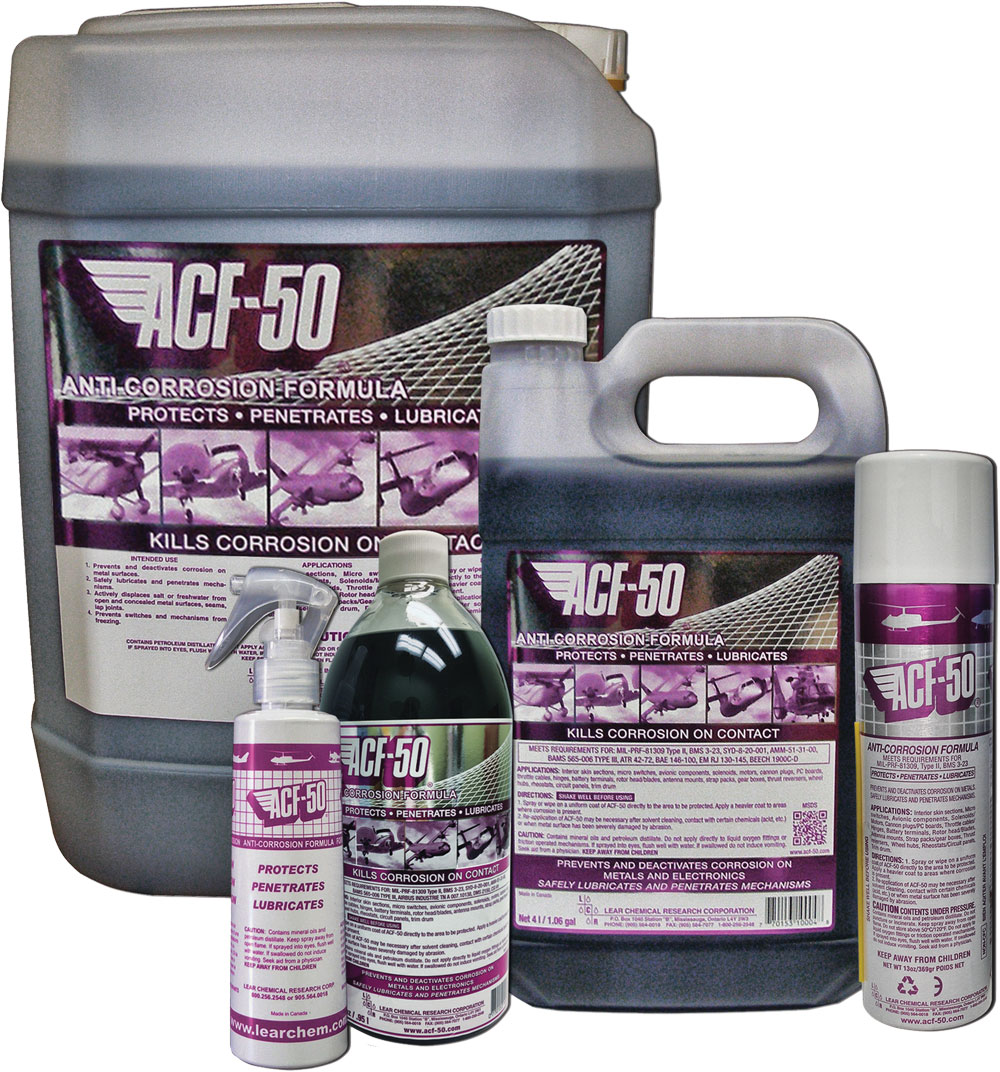
• Superior anti-wear formula reduces damaging wear and increases engine.
• Complete anti-corrosion solutions for structure and electronics.
• Prevents new corrosion from forming.
• Extends component life.
• Prevents corrosion-induced failures.
• Protects metal and electronic systems using advanced polar bonding chemistry.
For more info: learchem.com
Neo Synthetic Oil
High Performance Grease
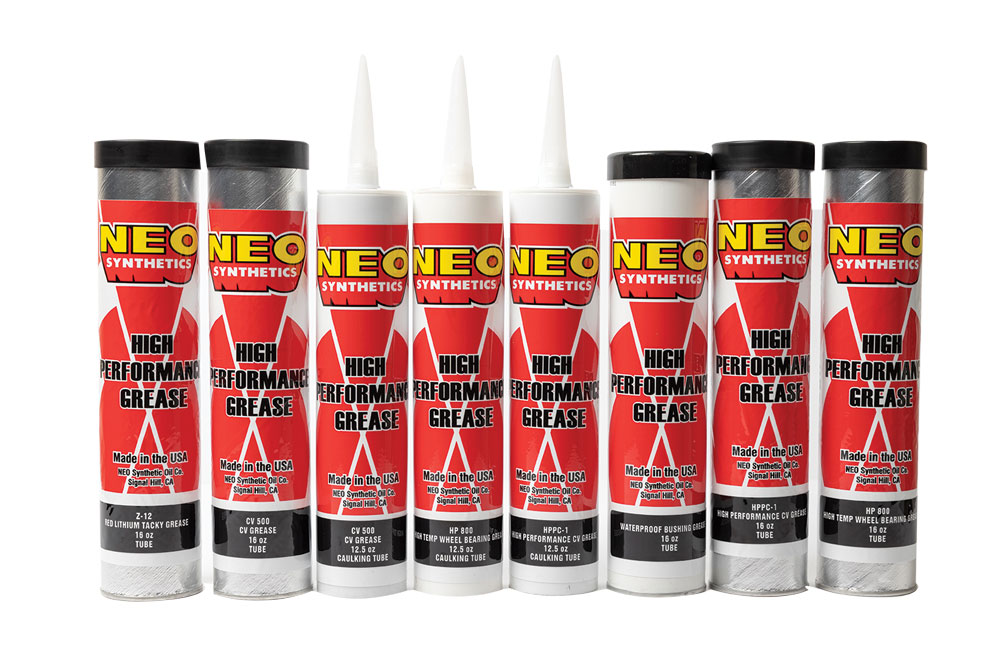
• Neo has the solutions to all of your grease needs.
• CV joint greases.
• Wheel bearing greases.
• Waterproof bushing greases.
• Anti-seize greases and more.
For more info: neosyntheticoil.com
Pakelo Lubricants
Racing Transmission DLS A
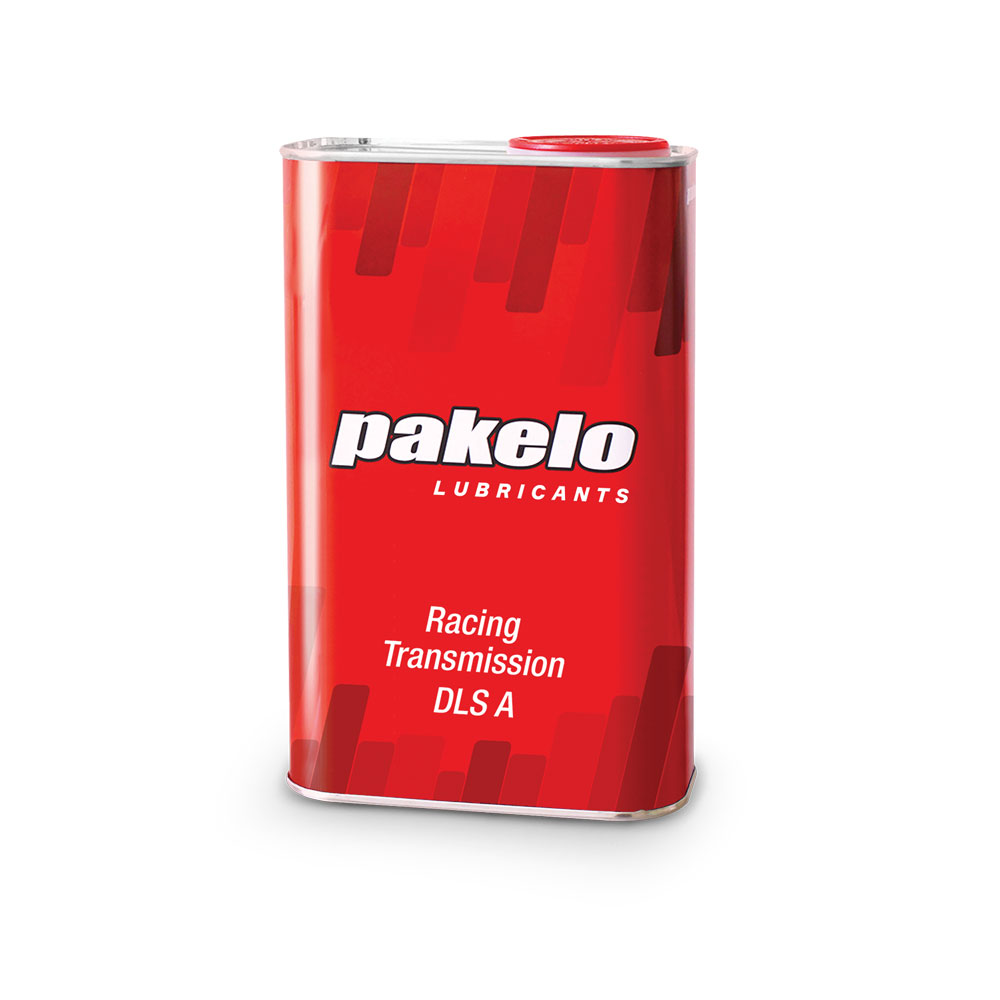
• High-performance transmission lubricant specific for race car transmissions.
• The product represents the result of a long-term study, design, and development focused to obtain an innovative chemistry suitable for extreme racing conditions.
• Provides exceptional resistance to wear and extreme pressures; great anti-oxidative, anti-rust, and anti-foam properties; absolute shear stability.
• Maintains its starting viscosity during service even when undergoing extreme mechanical stress; effective LS (limited slip) properties.
For more info: pakelo-usa.com
PennGrade 1
High Performance Oil
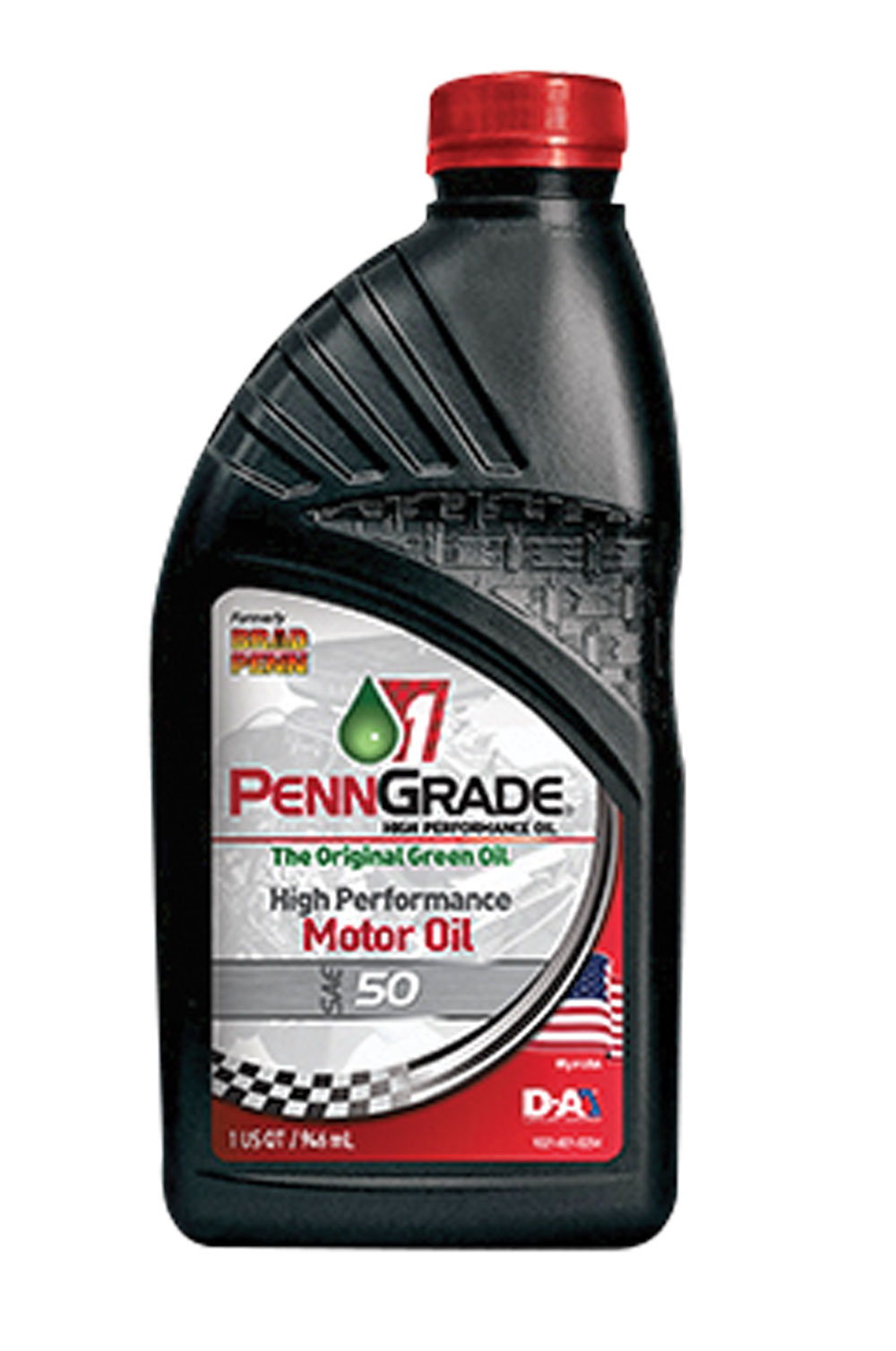
• Enhanced levels of zinc and phosphorous.
• Superior film strength “clingability.”
• High-temperature stability/protection.
• Strong detergency, dispersants for engine cleanliness.
• Made in the USA.
For more info: penngrade1.com
PowerMist Racing Fuels
Nitro X Product Line
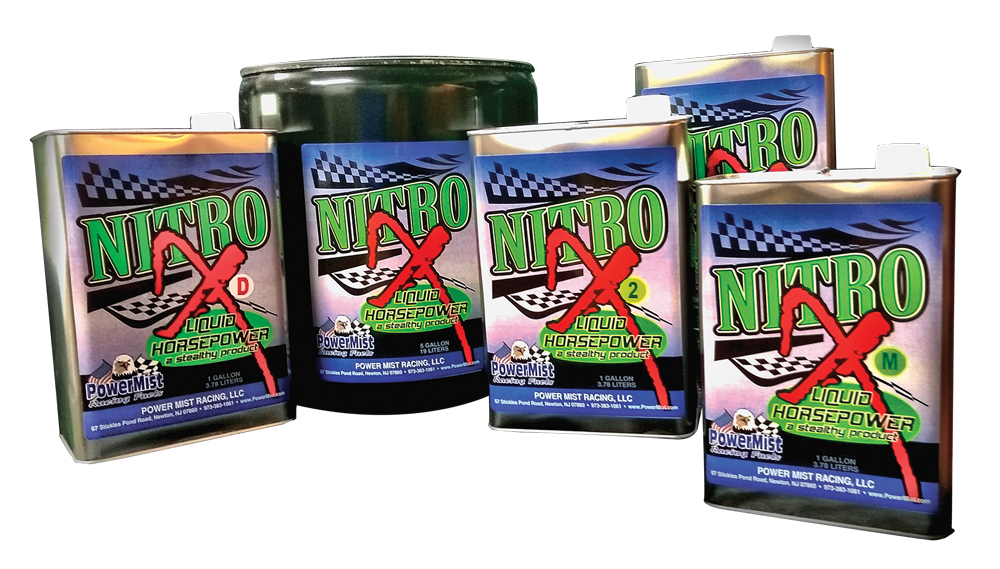
• NITRO X is an alcohol or gasoline additive.
• NITRO X2 is a gasoline additive.
• NITRO XM is a methanol additive.
• NITRO XD is a diesel additive.
• NITRO XE is a new oxygenating additive formulated to safely and effectively add oxygen to any ethanol-based fuel.
• Available in single gallon or multi-pack (two- or four-gallon cases), and in five-gallon pails.
For more info: powermist.com
Red Line Synthetic Oil
Heavy ShockProof
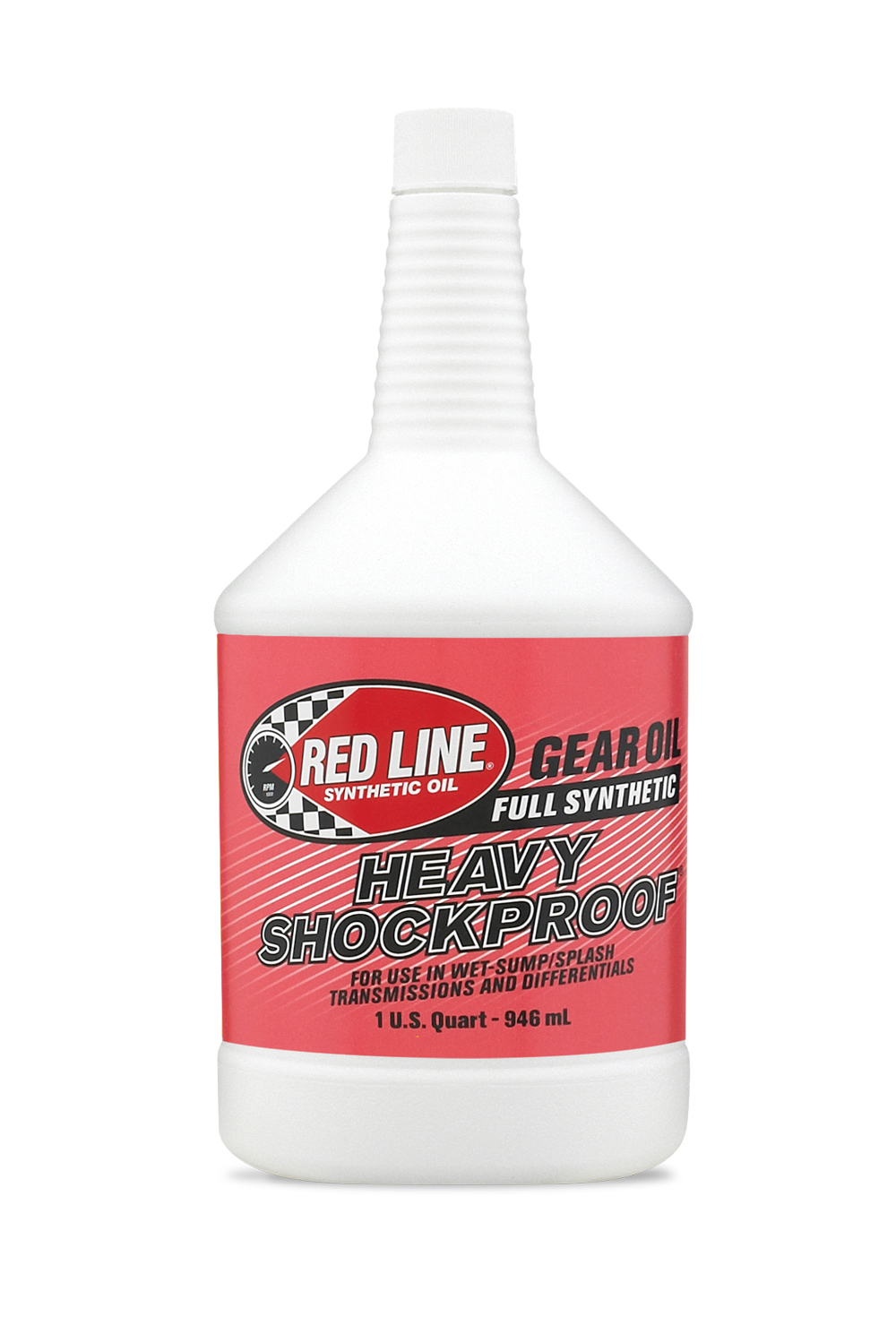
• Film thickness greater than an SAE 75W-250, yet low-fluid friction like 75W-90.
• For heavily loaded racing differentials and transmissions, problem gearboxes.
• Most popular ShockProof product, many racing and specialty applications.
• Many performance racing applications like sprints, midgets, dirt late models, and quick-change differentials, Detroit lockers and spools, NHRA Top Fuel and Funny Car
rearends.
For more info: redlineoil.com
Royal Purple
XPR Extreme Performance Racing Motor Oil
• Fortified with a high level of zinc/phosphorous anti-wear additive and a generous dose of Synerlec.
• Synerlec is Royal Purple’s proprietary additive chemistry that greatly increases the protective film strength of the oil, reducing metal to metal contact, friction, wear.
• Protection against engine wear, superior lubricity and low coefficient of friction for less parasitic loss and more power to the wheels.
• Premium synthetic base oils and Synerlec technology resist thermal degradation.
• Prevents the sludge and dilution by exotic fuels (alcohol and nitromethane).
For more info: royalpurple.com
Schaeffer Manufacturing Co.
Micron Moly Racing Oil 20W-50
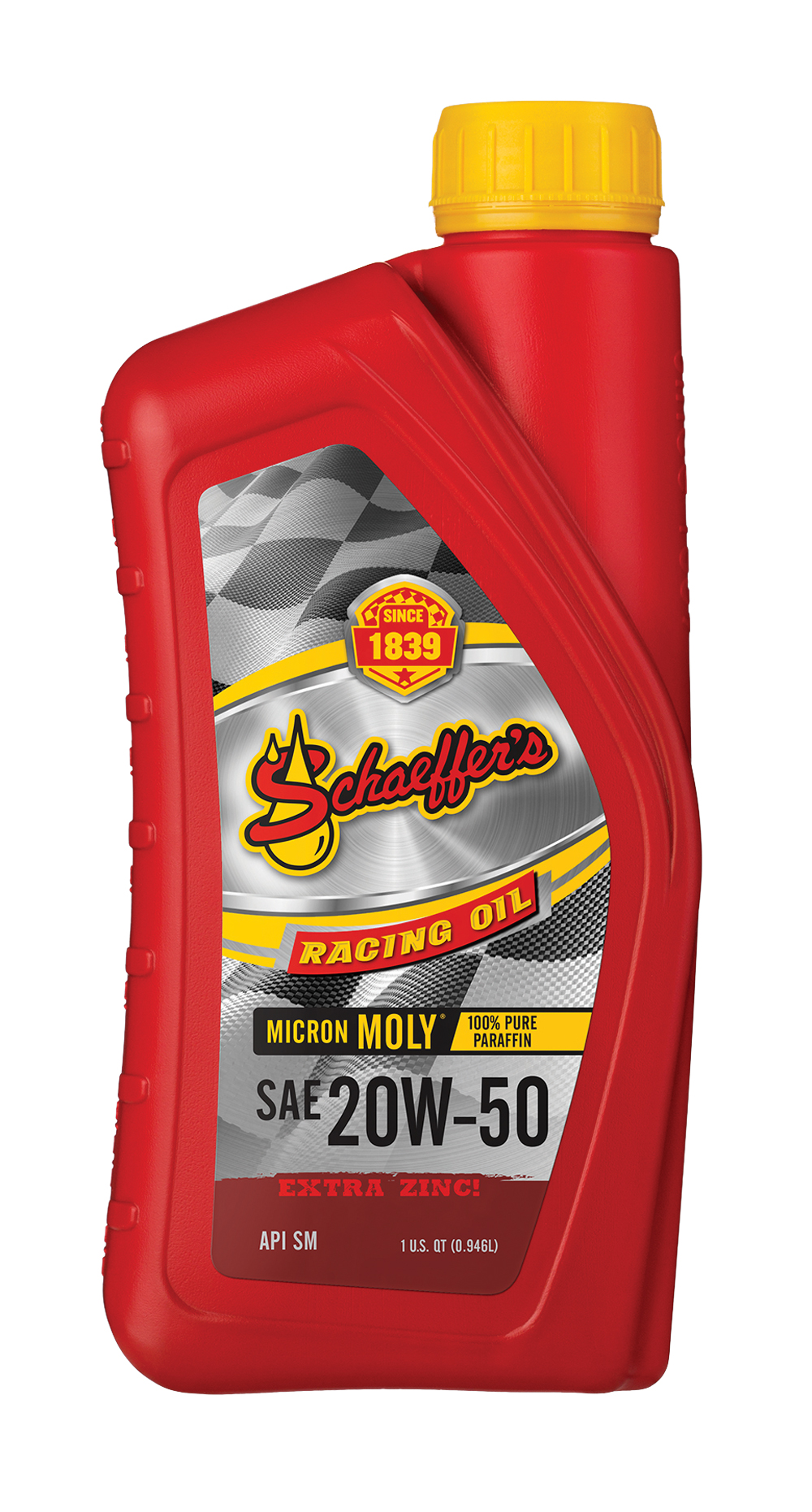
• Made for race engines that burn alcohol-based racing fuels.
• Protects engines from wear and tear during high-temperature and high-rpm driving.
• Fortified with Micron Moly and Penetro to reduce friction and wear on bearings, rings, pistons, cylinders, and valvetrains.
• Enhanced with extra zinc to further protect flat tappet cam engines and other components from wear, scuffing, and abrasion.
• Advanced detergency performance to suppress high-temperature deposits from forming.
• Maintains oil thickness and pumpability during high temperatures.
For more info: schaefferoil.com
Summit Racing Equipment
DOT Racing Brake Fluid
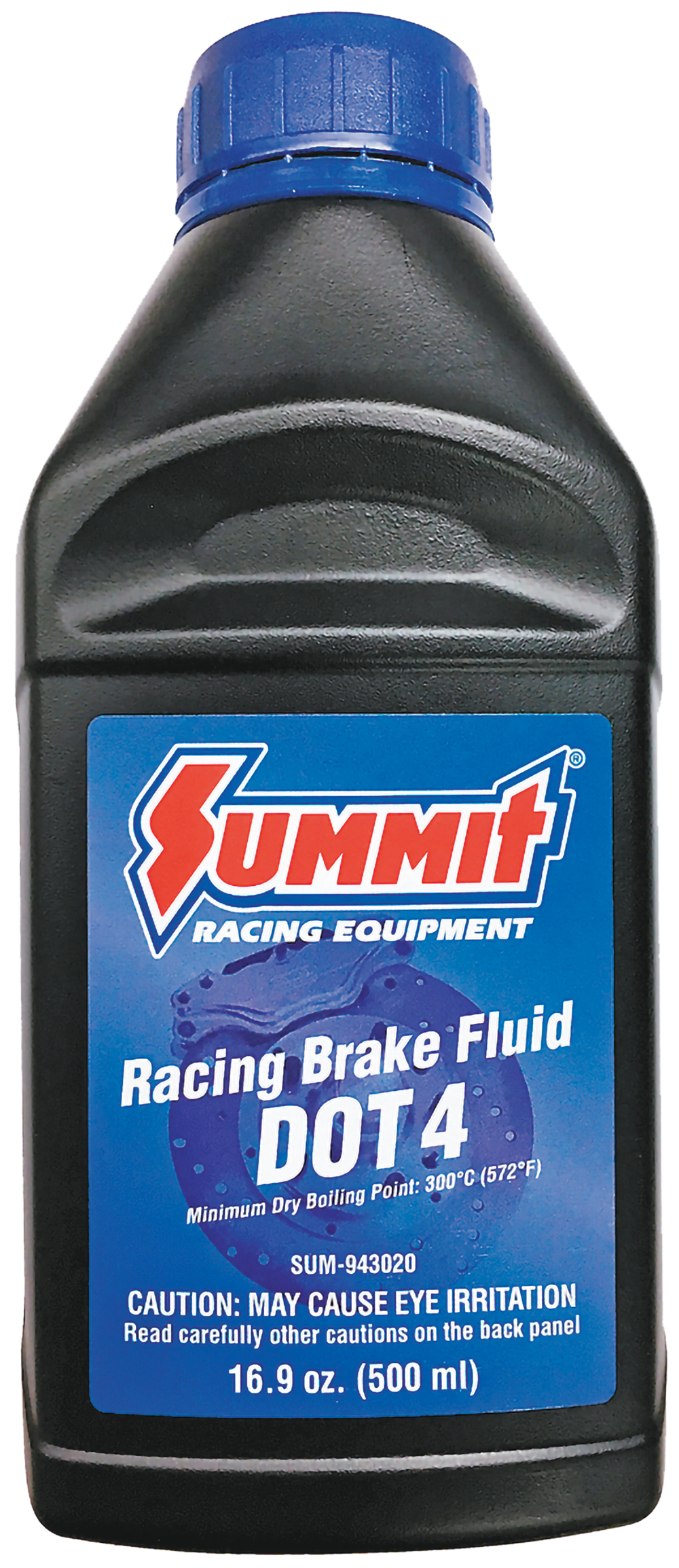
• Full-synthetic brake fluid provides outstanding performance under racing conditions.
• Minimum dry boiling point of 572 degrees F (300 degrees C) and low compressibility.
• Helps maintain firm pedal response while avoiding brake fade and vapor lock.
• Exceeds the current US FMVS no. 116 DOT 4 specification
For more info: summitracing.com
VP Racing Fuels
Pro Grade Full Synthetic Racing Oil
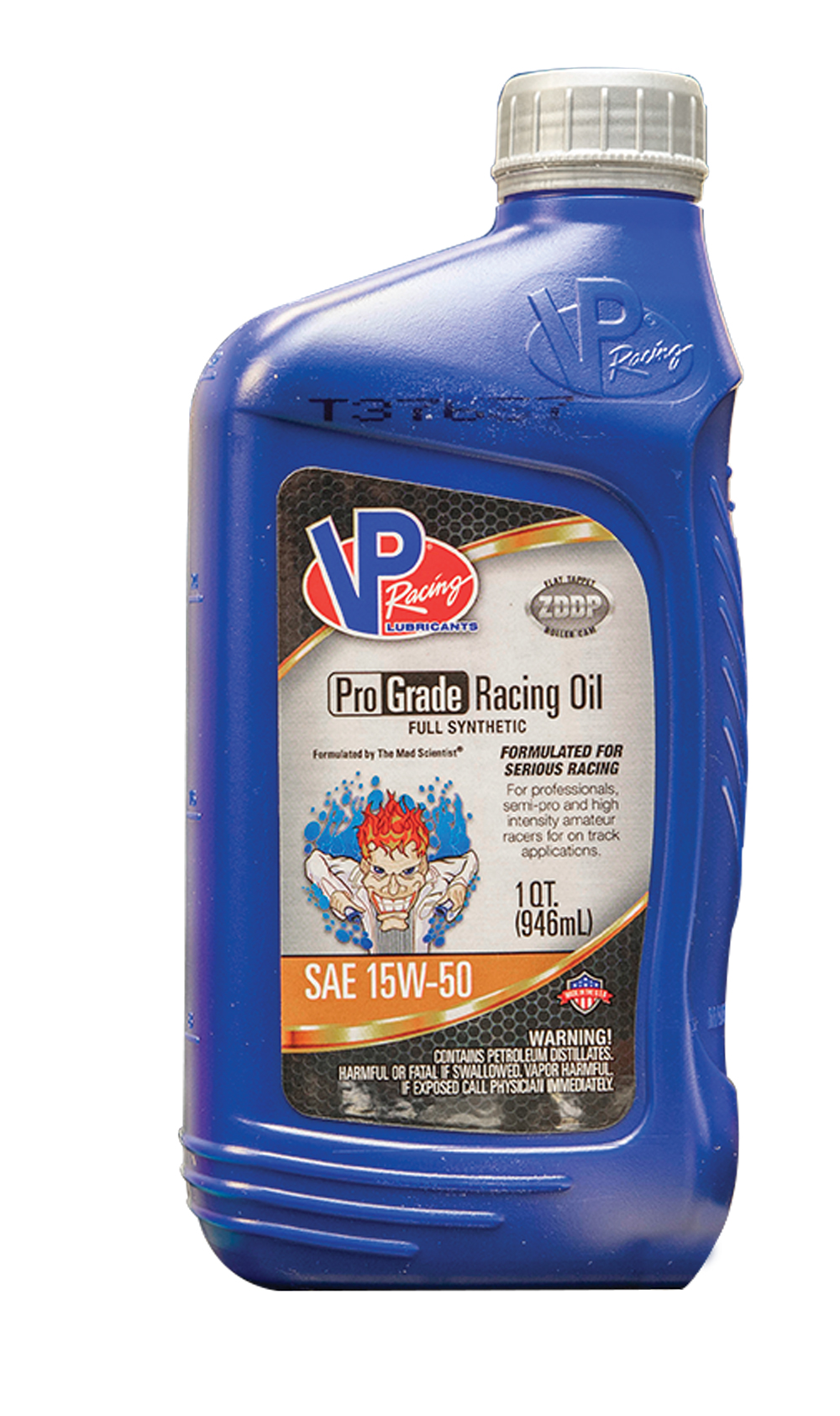
• Designed for high-horsepower, high-rpm, big and small block engines.
• Formulated with technologically advanced chemistry.
• Pro Grade contains multiple anti-wear chemistries, including high levels of zinc and phosphorous (ZDDP).
• Features a balance of friction and viscosity modifiers that significantly reduce fluid-to-fluid and metal-to-fluid friction, increase horsepower, and lower operating
temperature.
• Available in SAE 0W-20, 5W-30, 10W-40, and 15W-50.
For more info: vpracingfuels.com
zMax
10W-30 Race Oil (Non API)
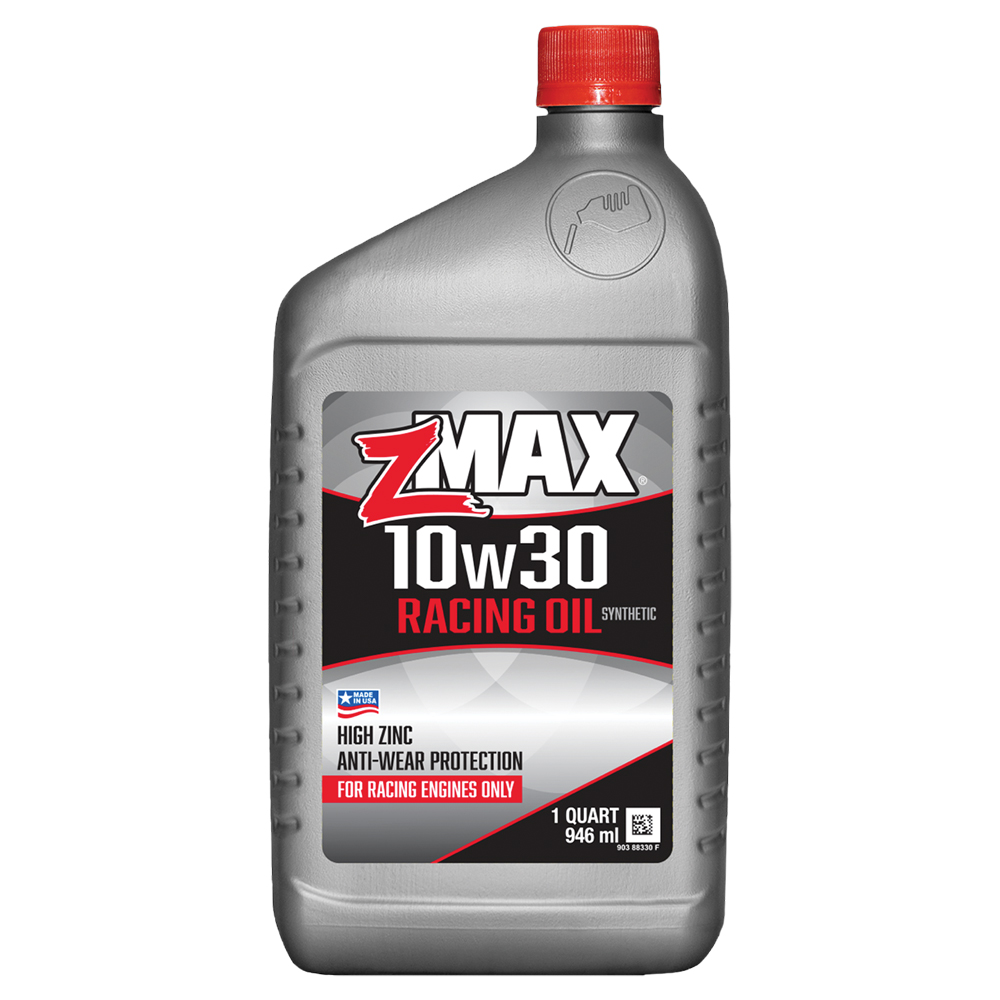
• Race only.
• High zinc/phosphate.
• Provides power and durability, which go hand in hand.
• zMax Race Products are used in the top-tier racing series and affordable for the grassroots market.
• The zMax 10W-30 race oil retails at $11.99 a quart.
For more info: zmax.com
SOURCES
Blud Lubricants
bludlubricants.com
Champion Brands
championbrands.com
Driven Racing Oil
drivenracingoil.com
Howards Cams
howardscams.com
Hot Shot’s Secret
hotshotsecret.com
HPL
hploil.com
Klotz Synthetic Lubricants
klotzlube.com
LAT Racing Oils
latracingoils.com
Lear Chemical Research Corp.
learchem.com
Lubrication Specialties
lubricationspecialties.com
Neo Synthetic Oil
neosyntheticoil.com
Pakelo Lubricants
pakelo-usa.com
PennGrade 1
penngrade1.com
PowerMist Racing Fuels
powermist.com
Red Line Synthetic Oil
redlineoil.com
Royal Purple
royalpurple.com
Schaeffer Manufacturing Co.
schaefferoil.com
Summit Racing Equipment
summitracing.com
TriboDyn Lubricants
tribodyn.com
VP Racing Fuels
vpracingfuels.com
zMAX
zmax.com
 MEMBERSHIP LOGIN
MEMBERSHIP LOGIN JOIN PRI
JOIN PRI
